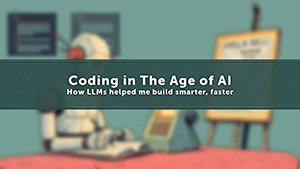
Sales aids used to simply be in print form, while their digital counterparts were PDFs. There was limited or no interactivity in the early phases, not to mention a lack of adoption due to cost or technology restrictions. Early interactive sales aids were created using Adobe Flash or other proprietary technologies. They were limited to display via hosted solutions or on heavy, clunky laptops.
In April 2010, Apple introduced the iPad: a portable, digital medium capable of delivering rich and immersive user experiences. AbelsonTaylor was ahead of the curve by forging a relationship with Apple to coincide the iPad release with a customized platform built to optimize the end-user experience. The iPad provided a way for pharmaceutical sales representatives to easily deliver information to the doctors, but the device itself wasn’t enough.
Since the release of the iPad, software companies and digital agencies alike have been fighting to lead the charge and win the race at creating an optimal detailing platform in which to present sales information in the digital age with proprietary platforms like eVe™, Adobe DPS, Veeva iRep, and Skura. These were just a few of the market offerings.
Unfortunately, most of the platforms originally offered throughout the industry only accounted for limited interactivity. Clients and agencies alike didn’t know how to best leverage what was available. Many presentations seemed to be nothing more than static slides, or contained minimal transitions triggered by interactions.
As AbelsonTaylor garnered new projects geared toward the IVA, we quickly looked for new ways to meld our award-winning creative with an immersive digital experience. Our presentations have spanned technologies to provide our clients with the end product they are looking for, that their messages deserve. Through Adobe DPS folios created using InDesign, native Objective C code leveraging all of the device’s capabilities, and highly interactive HTML and JavaScript presentations, we have developed messages that have consistently increased our clients’ HCP engagement.
We now have performance metrics to help us place direct value on messaging and interactions. Most platforms allow for at least basic analytics, while others allow for complete depth tracking. This helps provide us and our clients with a historical record of what messages are resonating with HCPs, what messaging may not be working, and how effective sales calls are in general.
What we’ve been able to keep consistent is AbelsonTaylor’s ability to continuously find innovative ways to convey our clients’ messages with effective use of current technologies, while pushing the limits of emerging tech as quickly as we can sneak it in. Given the support of analytics in an area that used to be measured by indirect metrics, and platform technologies evolving faster than ever, the only other thing we can assuredly say about future digital presentations is that they will be progressively less like the ones that came before them.


